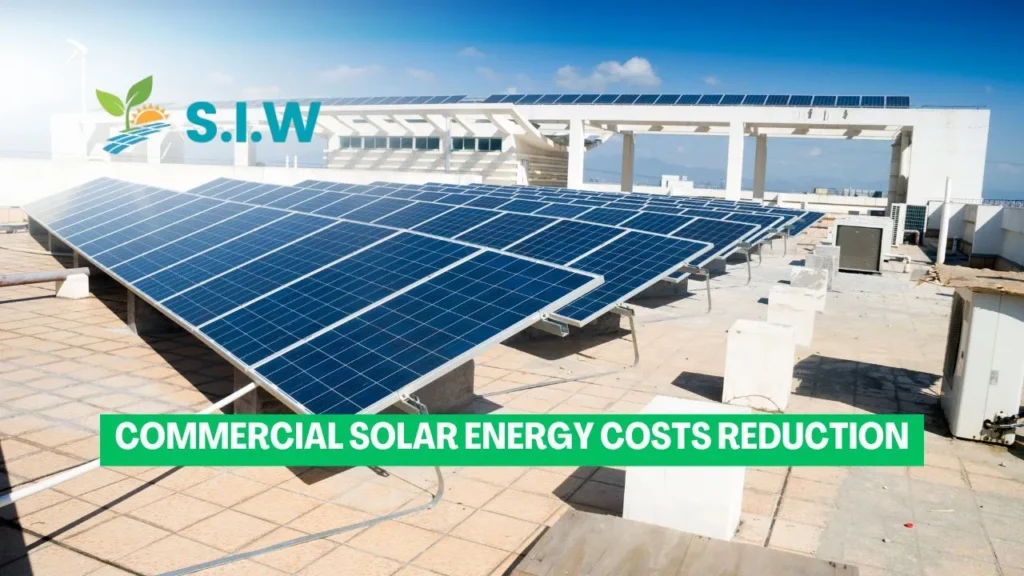In today’s dynamic business environment, companies are continually seeking methods to optimize their operational costs while enhancing their sustainability. One of the most effective strategies to achieve these goals is by adopting commercial solar energy systems. This detailed guide delves into the various aspects of reducing solar energy costs for commercial enterprises, providing actionable insights and expert recommendations.
Understanding Commercial Solar Energy
Commercial solar energy refers to the utilization of solar power systems in business environments. These systems harness energy from the sun through photovoltaic (PV) panels, which convert sunlight into electricity. The increasing adoption of solar energy in commercial settings is driven by its potential to significantly cut down electricity bills and reduce the carbon footprint of businesses.
Key Benefits of Commercial Solar Energy
Investing in solar energy offers numerous benefits for commercial establishments, including:
1. Significant Cost Savings
One of the most compelling reasons for businesses to switch to solar energy is the substantial cost savings. By installing solar panels, businesses can drastically reduce their dependency on traditional grid electricity, resulting in lower monthly utility bills. Over time, these savings can offset the initial investment in solar technology, leading to long-term financial benefits.
2. Predictable Energy Costs
Solar energy provides a stable and predictable cost structure. Once a solar system is installed, the cost of generating electricity remains constant regardless of fluctuations in energy prices. This stability enables businesses to better forecast their energy expenditures and manage their budgets more effectively.
3. Tax Incentives and Rebates
Government incentives, such as tax credits and rebates, further enhance the financial appeal of commercial solar installations. Programs like the Investment Tax Credit (ITC) can cover a significant portion of the installation costs, making solar energy a more accessible and affordable option for businesses.
If you’re looking for innovation in your business, consider going solar. Partner with the best commercial solar companies to achieve the best long-term return on investment.
Strategies for Reducing Solar Energy Costs
To maximize the cost-effectiveness of commercial solar energy systems, businesses should consider the following strategies:
1. Conduct a Comprehensive Energy Audit
Before installing a solar system, businesses should perform a detailed energy audit. This process involves analyzing current energy usage, identifying areas for improvement, and estimating the potential benefits of solar energy. An energy audit provides valuable insights that can help tailor the solar solution to the specific needs of the business, ensuring optimal performance and cost savings.
2. Optimize System Size and Design
Selecting the appropriate size and design of the solar system is crucial for cost reduction. A system that is too small may not generate enough electricity to meet the business’s needs, while an overly large system could result in unnecessary expenses. Working with experienced solar providers to design a system that aligns with the business’s energy requirements can help strike the right balance between cost and efficiency.
3. Invest in High-Efficiency Panels
The efficiency of solar panels plays a significant role in determining the overall cost-effectiveness of the system. Investing in high-efficiency panels can maximize energy production and reduce the number of panels required, thereby lowering installation and maintenance costs. Look for panels with high performance ratings and durability to ensure a long-term, cost-effective solution.
4. Explore Financing Options
Financing options can ease the initial financial burden of installing a solar system. Businesses can explore various financing models, including solar leases, power purchase agreements (PPAs), and solar loans. Each option has its own set of benefits and considerations, so businesses should carefully evaluate their choices to find the best fit for their financial situation.
5. Leverage Net Metering
Net metering is a billing mechanism that allows businesses to receive credit for excess electricity generated by their solar system. By feeding surplus energy back into the grid, businesses can offset their electricity costs and potentially earn revenue. Understanding and leveraging net metering policies in your area can further enhance the cost savings from your solar investment.
6. Regular Maintenance and Monitoring
Ongoing maintenance and monitoring are essential for ensuring the optimal performance of a solar system. Regular inspections, cleaning solar panels, and performance checks can prevent potential issues and maintain the efficiency of the system. Implementing a proactive maintenance plan can help avoid costly repairs and ensure long-term cost savings.
The Future of Commercial Solar Energy
As technology continues to advance, the future of commercial solar energy looks promising. Innovations in solar panel technology, energy storage solutions, and grid integration are expected to further enhance the efficiency and affordability of solar systems. Businesses that embrace these advancements early on can stay ahead of the curve and reap the benefits of cutting-edge solar energy solutions.
Conclusion
Adopting commercial solar energy systems is a strategic move that can lead to substantial cost savings, increased energy predictability, and enhanced sustainability. By following the strategies outlined in this guide, businesses can optimize their solar investments and enjoy the long-term financial and environmental benefits of solar power.








